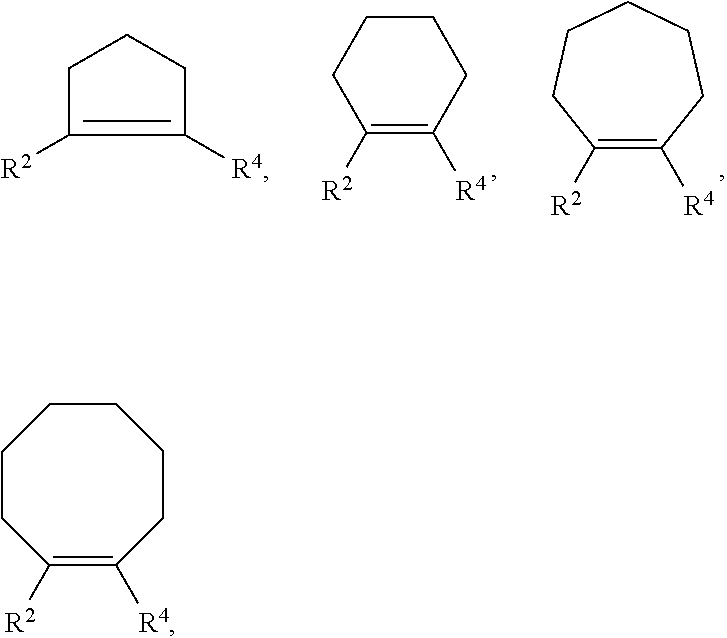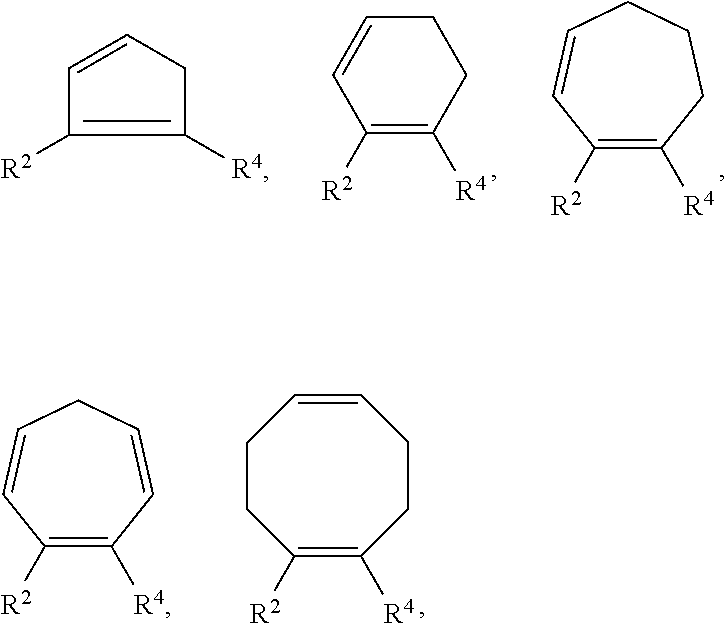Composition and method for inhibiting premature polymerization
a technology of premature polymerization and compounding method, which is applied in the direction of hydrocarbon purification/separation, chemistry apparatus and processes, organic chemistry, etc., can solve the problems of high cost of nitroxyl compounds, and inability to meet the requirements of nitroxyl compounds, etc., to achieve the effect of inhibiting premature polymerization
- Summary
- Abstract
- Description
- Claims
- Application Information
AI Technical Summary
Benefits of technology
Problems solved by technology
Method used
Image
Examples
example 1
[0059]Uninhibited styrene samples (5 mL each) obtained by filtering commercially obtained styrene through a pad of inhibitor remover to remove 4-tert-butylcatechol was placed in a test tube and was dosed with desired inhibition composition. The inhibition compositions were methanol solutions comprising metal halides and ligands as listed in table 1. The tube was then capped with a septum. The capped tube was purged with argon for 3 minutes. The sample was heated in a 110° C. oil bath for one hour (some were heated for two, three or four hours) and then removed from the tubes. The heated sample was then placed in 45 mL of methanol to precipitate polystyrene. The solid polystyrene was collected by filtration on a pre-weighed one-micron filter paper; dried in a 105° C. oven and weighed. The weight percentage of formed polystyrene over the uninhibited styrene is shown in table 1 below. For some samples, a small amount was taken out and characterized with 1H NMR. The percentage of charac...
example 2
[0060]Sample of uninhibited styrene (100 mL each) obtained by filtering commercially obtained styrene through a pad of inhibitor remover to remove 4-tert-butylcatechol was placed in a 3-neck round-bottom flask equipped with a condenser, an argon dispering tube and a septum and was dosed with the inhibition composition. The inhibition compositions were methanol solutions comprising metal materials, and ligands, and in sample numbers 79-84, third materials, as listed in table 2. The sample, with a magnetic stirring bar inside the flask, was purged with argon for 15 minutes at room temperature and then placed in a 110° C. oil bath. The sample was continuously purged with argon gas while being stirred. Every hour, 5 mL of sample was taken with a graduated syringe and placed in 45 mL of methanol for precipitating polystyrene. The solid polystyrene was collected by filtration on a pre-weighed one-micron filter paper, dried in a 105° C. oven and weighed. The weight percentage of formed pol...
PUM
| Property | Measurement | Unit |
|---|---|---|
| compositions | aaaaa | aaaaa |
| volatile | aaaaa | aaaaa |
Abstract
Description
Claims
Application Information
 Login to View More
Login to View More - R&D
- Intellectual Property
- Life Sciences
- Materials
- Tech Scout
- Unparalleled Data Quality
- Higher Quality Content
- 60% Fewer Hallucinations
Browse by: Latest US Patents, China's latest patents, Technical Efficacy Thesaurus, Application Domain, Technology Topic, Popular Technical Reports.
© 2025 PatSnap. All rights reserved.Legal|Privacy policy|Modern Slavery Act Transparency Statement|Sitemap|About US| Contact US: help@patsnap.com



